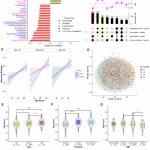For girls recognized with irregular breast adjustments within the early levels, new analysis means that genetic evaluation might assist reply necessary questions. Do these cells progress to invasive breast most cancers?
DCIS and LCI are irregular cells trapped within the ducts or lobules (milk manufacturing glands throughout the ducts).
Predicting that girls with DCIS or LCIS are most definitely to develop invasive breast most cancers is important to offering the absolute best remedy choices. As a result of not all circumstances of stage 0 breast most cancers progress that method, says Jasmine Timbress, a medical data analyst at King’s Faculty in London.
It’s presently unimaginable to know which girls will ultimately develop invasive breast most cancers, so many are receiving therapies that aren’t wanted, based on analysis authors comparable to surgical procedure, radiation remedy, or hormone remedy.
Researchers behind the brand new examine hope that genetic testing to determine essentially the most at-risk folks will finally pave the best way for extra customized remedy choices.
Genetic danger scores had been useful in predicting DCIS and LCIS trajectories
The examine adopted greater than 2,000 girls within the UK who had been recognized with stage 0 breast most cancers earlier than invasion. About 90% had been in DCIS, with the remaining having LCI.
Utilizing DNA evaluation, the researchers examined these cancers for 313 frequent genetic variants and mixed the outcomes into what they name genetic danger scores.
Girls with larger scores had been extra more likely to develop invasive breast most cancers later. Importantly, genetic scores predicted danger no matter different elements comparable to age and remedy sort.
“Till now, remedy choices have been based mostly on how these cells look below a microscope,” says Timbres. Nevertheless, these findings recommend that predicting which girls usually tend to develop invasive breast most cancers does not simply rely on these strategies.
“We additionally want to think about the genetic dangers of girls, household historical past and way of life elements. Wanting on the large image, we can provide girls extra correct details about the non-public danger of recurrence.
A step in direction of extra customized care
Danger scores might determine folks at larger danger for growing additional breast most cancers, whether or not in the identical or on the alternative facet, stated Dr. Roy, who was not concerned within the examine. “This highlights the potential genetic danger scores that information extra customized care on this setting,” she says.
What does it really appear like? If the findings are confirmed, danger scores may also help physicians alter suggestions for monitoring energy and danger discount methods, together with medication comparable to tamoxifen and aromatase inhibitors, notably for high-risk girls, says Roy.
“On the similar time, girls who’re discovered to be at low danger might be able to keep away from pointless therapies and uncomfortable side effects. Danger scores might enhance outcomes for high-risk sufferers whereas lowering over-treatment of danger and optimizing well being care assets for low-risk people,” she says.
This examine has some limitations
Mays Chen, a medical oncologist at Stanford Drugs in California, says the examine is promising, however the findings shouldn’t be used no less than to advertise sufferers’ remedy choices.
She says that genetic danger scores might assist decide the chance degree for ladies with stage 0 breast most cancers, and will probably be used to information girls who don’t contemplate remedy for DCIS or LCIS lesions.
“This can be a retrospective examine and it’s troublesome to know if it might have an effect on remedy outcomes as a result of it isn’t based mostly on future data,” says Dr. Chen, who was not concerned within the new examine. In different phrases, the present examine seemed again on current affected person data quite than chasing folks over time to see what occurred.
Which means the outcomes can point out attainable hyperlinks, however genetic testing can not exhibit that remedy choices can change or enhance most cancers outcomes.
These findings have to be validated in additional research, notably in girls with LCIS, Chen says.
Future analysis ought to test whether or not the findings will likely be extra broadly utilized, together with girls of various races and ethnicities. The British and European populations on this examine had been nearly totally white girls, she factors out.
Ought to girls with stage 0 breast most cancers search genetic testing?
If a girl is recognized with preinvasive breast most cancers, genetic testing might present extra details about her danger of growing invasive breast most cancers sooner or later, Roy stated.
“Genetic testing might present helpful data, however choices are customized and should be made with the healthcare crew,” she says.
If breast most cancers sufferers are contemplating genetic testing, Roy affords the next issues:
- Genetic testing can search for hereditary genetic adjustments (comparable to BRCA1, BRCA2, or different genetic variants) that may improve the chance of breast most cancers.
- Figuring out the outcomes may also help information screening choices, precautions, or remedy choices.
- Not all girls with DCIS or LCIS require genetic testing. It’s most helpful for folks with a powerful household historical past of breast and ovarian most cancers, a younger age of prognosis, or different danger elements.
- Genetic counselors may also help you overview private and household historical past, clarify the strengths and weaknesses of the take a look at, and interpret the outcomes.








